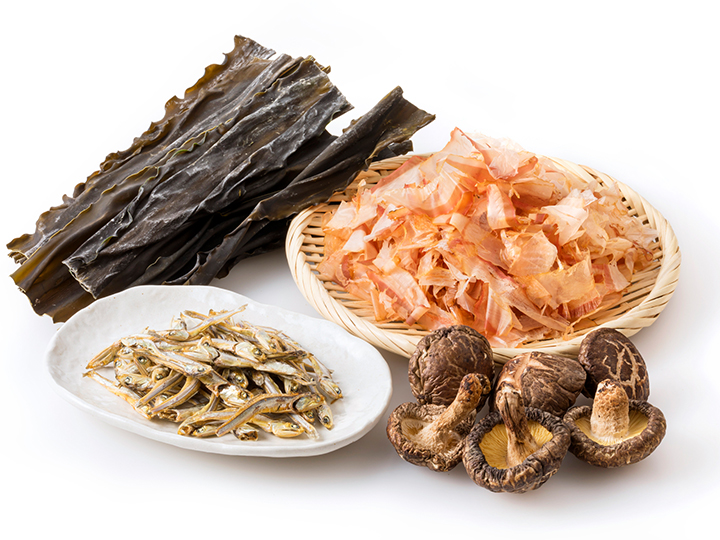Contest Theme: UMAMI
Since its 5th year, the contest theme of the Washoku World Challenge has been UMAMI, which is the essential taste at the heart of Japanese cuisine.

What is UMAMI?
UMAMI is the source of the savoriness of Japanese cuisine. It is one of the five basic tastes, the others being sweetness, sourness, saltiness, and bitterness, and an important component of a dish’s flavor. Recognition of UMAMI has increased in recent years, and the word has made its way into many non-Japanese dictionaries. The UMAMI taste is usually a product of some combination of inosinic acid, amino acids such as glutamic acid, and nucleic acids such as guanylic acid. In Japan, the technique of extracting UMAMI from kombu kelp and bonito flakes to create dashi broth was developed approximately 500 years ago. Many cookbooks were published in the mid-Edo period (around 1651-1745), and these strongly advocated the importance of dashi. Japan has a long history of valuing dashi highly, and its UMAMI has brought out the flavors of ingredients and played key roles in the creation of delectable dishes.
This Year’s Theme: Goho‐Five methods
This year's theme “Goho‐Five methods” is aiming to reconsider the basis of Japanese cuisine.
The basis of Japanese cuisine is “Gomi, Goshiki, and Goho.”
“Gomi” refers to the five tastes of sweetness, sourness, saltiness, bitterness, and umami. “Goshiki” refers to five colors used in Japanese cuisine that consist of red, blue (green), yellow, white, and black.
Lastly, “Goho” is the core of Japanese cooking skills, referring to the basic cooking methods employed to make the best use of the ingredients. Goho consists of “Nama” (cutting), “Niru” (simmering), “Yaku” (grilling), “Musu” (steaming), and “Ageru” (deep-frying).
Japanese cuisine combines these methods to bring out the natural flavor of the ingredients as they are and emphasizes harmony with nature by using seasonal ingredients.
Everyone is different when it comes to one’s philosophy and approach to cooking, but there is a common basis at the root of these diverse ways of thinking.
We hope that this will be an opportunity for you to reconsider the basics of Japanese cuisine, to further refine your skills, and to connect them to the future.
We look forward to your application!
Eligibility to Application
Application is restricted to those of non-Japanese nationality who fulfill the following conditions:
* applications will be accepted regardless of whether the applicants live in or outside of Japan.
- Chefs of Japanese cuisine
- Chefs who are interested in Japanese food and food culture
- Culinary students who study Japanese cuisine and want to become chefs
- Students studying at Japanese culinary institutions and those involved in Japanese cooking programs in Japan
* Excludes past winners of the Washoku World Challenge
Application Flow
- Application
-
- Document Screening
-
15 contestants
to be selected - Video Screening
-
6 finalists
to be selected - Online lessons
for finalists
* Due to the worldwide spread of infectious diseases, we have decided to cancel the final tournament in Tokyo.
As the result, we will offer the special online lessons by top Japanese chefs to the six finalists.